Summary
- The Messerschmitt Me 323 Gigant was the largest land-based transport aircraft during WWII, with 198 built.
- The Junkers Ju 287 had one complete flying prototype with six engines and a max speed of 347 mph.
- The Latécoère 631 was a French-made civil transatlantic flying boat with a short operational duration.
I appreciate it when our loyal Simple Flying readers ping me with suggestions for article topics. This article is in response to reader requests for us to explore the six-engine planes of WWII.
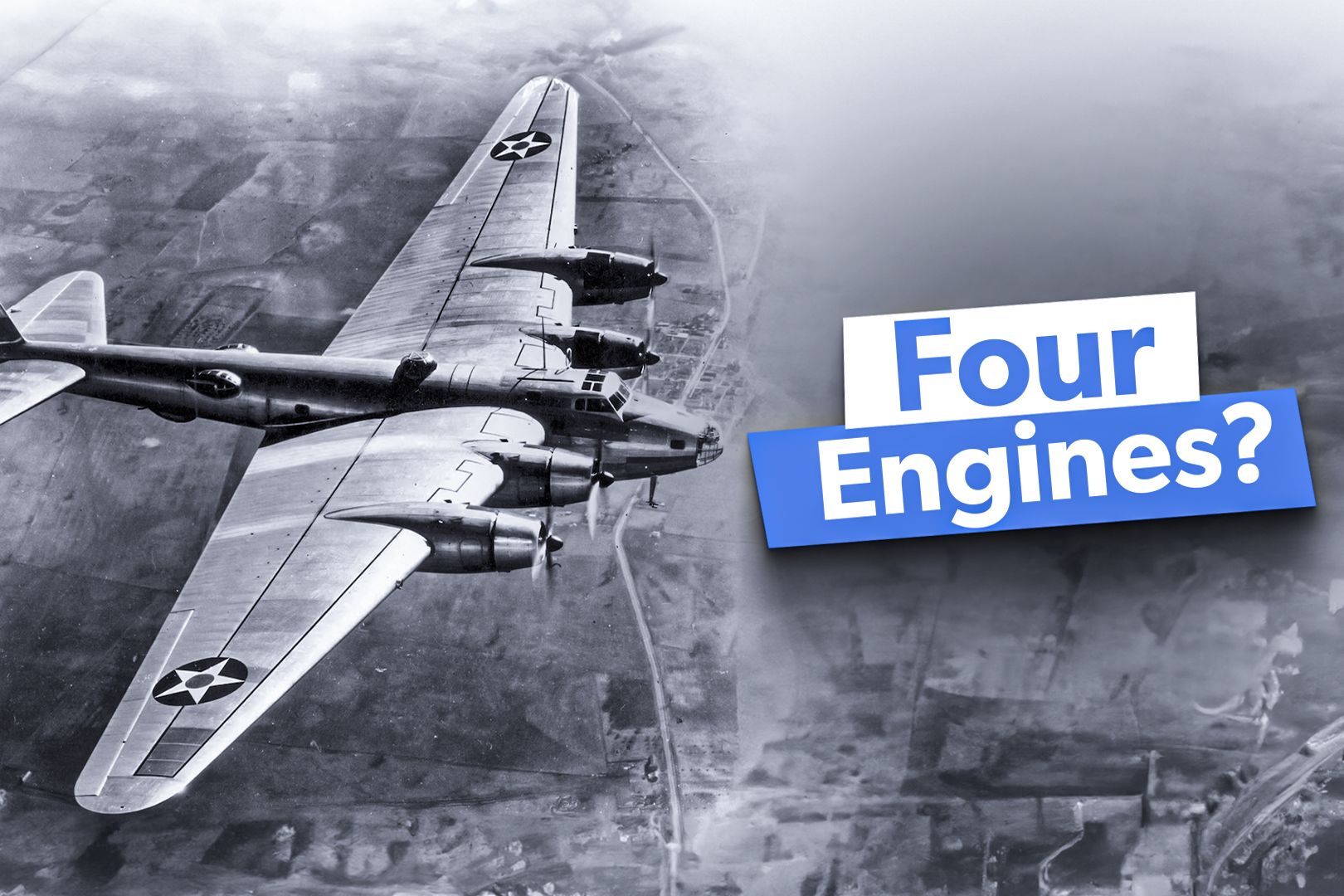
Related
What WW2 Planes Had 4 Engines?
4-engines were mainly the purview of strategic bombers during WWII. The Allied examples were more famous, but the Axis also made their fair share.
After my slightly controversial article on World War II 4-engine bombers was published, my LinkedIn Connection Rob Harvan of Commemorative Air Force (CAF) – whose name some of you might recognize from a couple of my recent pieces on WWII-vintage aircraft restoration – pinged me to suggest that I up the ante by doing an article on 6-engine (that’s right, folks, SIX engines) planes of “Dubya-Dubya 2.” Rob was nice enough to provide not just a specific list of warbirds but the production numbers for good measure, so double-thanks for that, Rob!
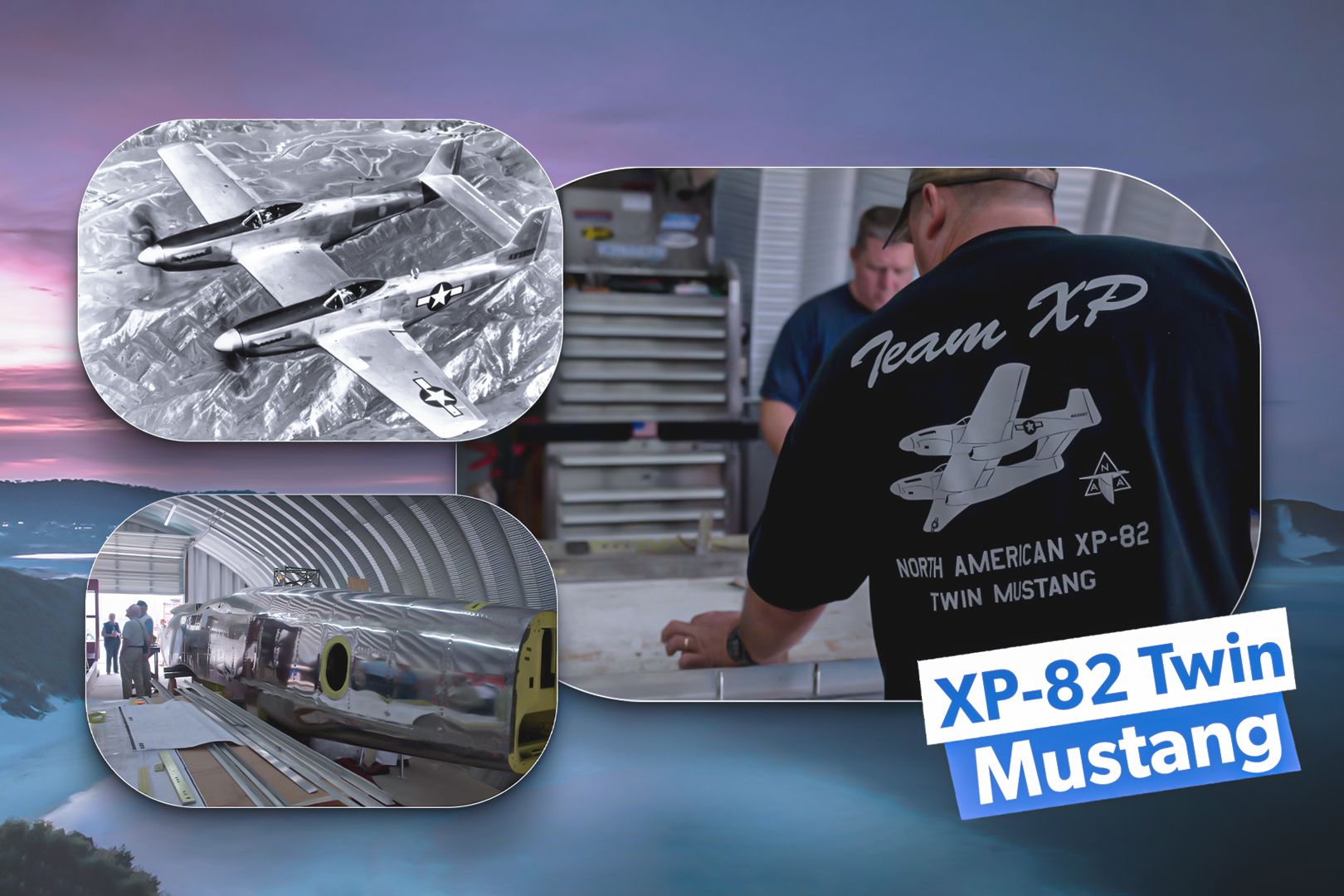
Related
What Are The Challenges Of Restoring WWII Military Planes?
Restoring WWII military planes is a worthwhile endeavor, but what are the inherent challenges of these projects?
So, I thought to myself, “Hey, why the heck not?” After all, back when I wrote for 19FortyFive, I wrote articles on the mammoth Spruce Goose (eight engines) and B-36 Peacemaker (10 engines), plus a piece on the “Caspian Sea Monster” Ekranoplan (eight engines) for my Patreon page. But none of those were WWII warbirds. As it happens, all the planes we’ll be covering now were of Nazi-German origin or at least had some German nexus, which may indicate something or other about what Germany’s aerospace engineers considered adequate power for the job at the time.
5
Messerschmitt Me 323 Gigant (“Giant”)
198 built (plus 15 converted from the Me 231 glider)
If one used total production numbers as the yardstick for measuring an aircraft’s success, then the Me 323 would have to be considered the most successful warbird on this list. It was the largest land-based transport aircraft to fly during the war.
|
Fuselage Length: |
92 ft 6 in (28.2 m) |
|
Wingspan: |
181 ft 1 in (55.2 m) |
|
Height: |
33 ft 4 in (10.15 m) |
|
Empty Weight: |
60,252 lb (27,330 kg) |
|
Max Takeoff Weight: |
94,799 lb (43,000 kg) |
|
Powerplant: |
6 × Gnome-Rhône 14N 14-cylinder air-cooled radial piston engines[15] 1,180 PS (1,164 hp; 867.9 kW) take-off power |
The Gigant made its maiden flight on January 20, 1942, and went operational in November 1942, whereupon it saw significant use in the Mediterranean Theater of the war, starting with the Tunisian campaign. The Me 323’s service in this theater of operations was largely necessitated by the Axis’s heavy shipping losses, which compelled a fallback upon a heavy airlift of equipment across the Mediterranean to keep the Afrika Korps of Field Marshall Erwin Rommel (“the Desert Fox”) supplied.
There are no complete Me 323s surviving today. Still, there is a Gigant main wing spar sitting in the collection of the Luftwaffenmuseum der Bundeswehr (Air Force Museum of the German Federal Armed Forces) in Berlin. Meanwhile, a ruined but complete wreck of a Me 323 sits in 200 ft (60 m) of water, 8 nautical miles (15 km) from the coast of La Maddalena, an island near Sardinia, Italy.
4
Junkers Ju 287
2 complete airframes were built, plus three partially completed prototypes
At first glance, this plane seems to bear at least a passing resemblance to another Luftwaffe jet bomber, the Arado Ar 234 Blitz:
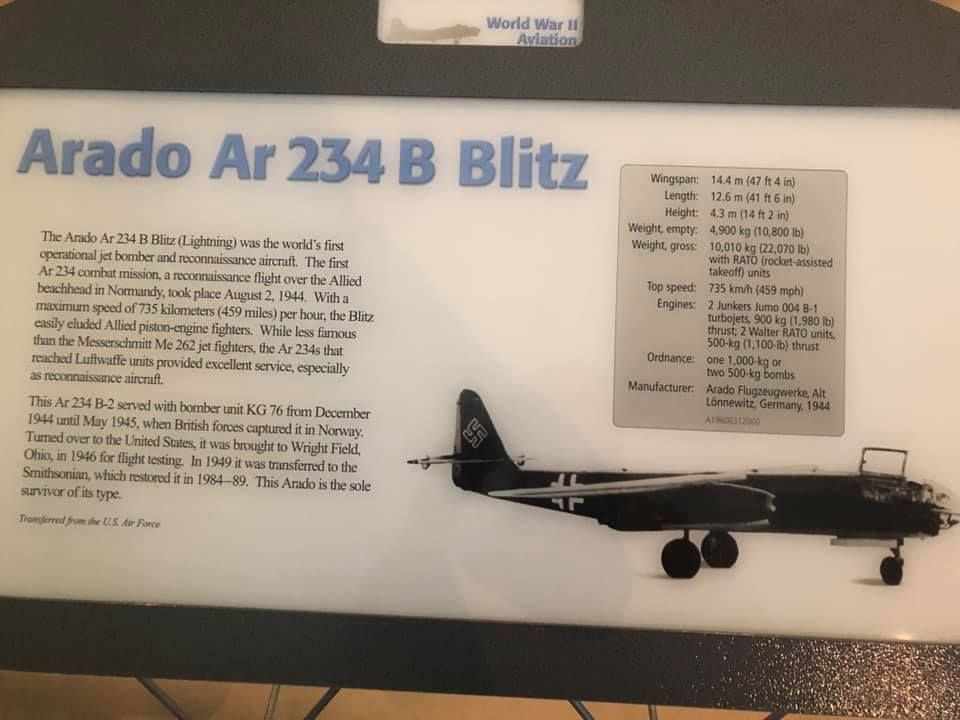
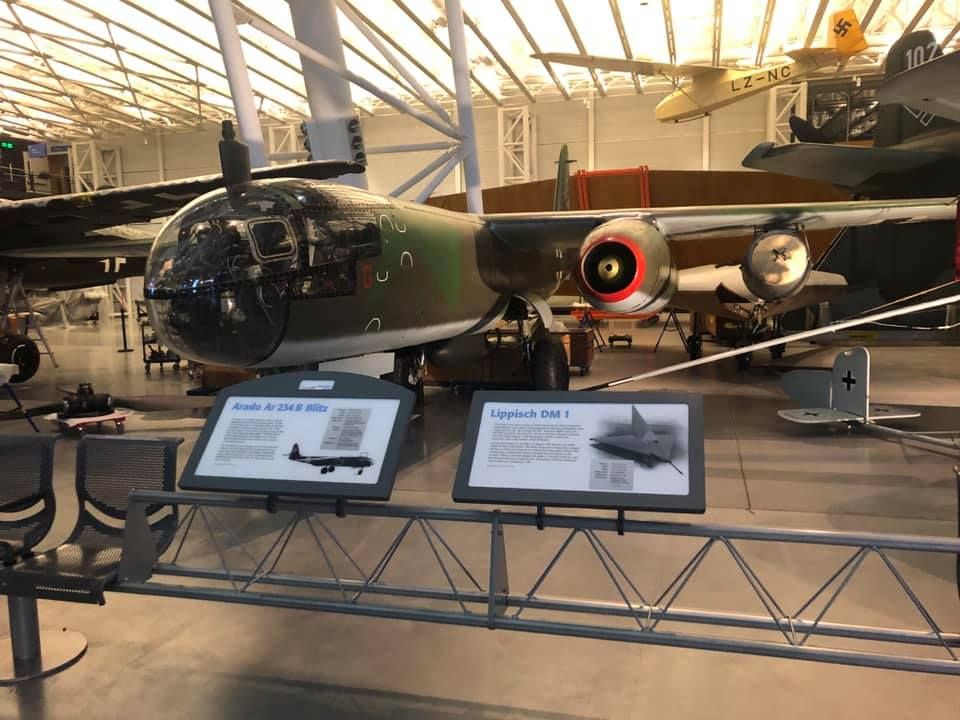
A big difference is that 214 of the Blitzes were fully built versus a mere two for the Ju 287. Moreover, only one of the two Ju 287 prototypes, designated Ju 287 V1, actually flew (making its maiden flight on August 8, 1944). As an aside, the Ju 287 V2 is not to be confused with the Nazis’ V1 cruise missile and V2 rocket terror weapons. The V1 actually only had four engines, while the V2, which was never quite completed, would have had six engines (two triple clusters composed of four Jumo 004s and two BMW 003s). V3 and V4, which also had six engines, were reportedly 80-90% complete and 60% complete, respectively, when the Soviets overran the Junkers plant.
Designed by Philipp von Doepp, the Ju 287 was a tactical jet bomber built in Nazi Germany in 1944. It featured a novel forward-swept wing and was among the very few jet-propelled aircraft ever built with fixed landing gear. Among the specifications of the plane:
- Max airspeed: 347 mph (558 km/h ; 302 kn) at 20,000 ft (6,000 m)
- Cruise speed: 318 mph (512 km/h; 276 kn) at 23,000 ft (7,000 m)
- Range: 980 mi (1,570 km; 850 NM)
- Service ceiling: 9,400 m (30,800 ft)
3
OKB-1/Junkers EF-131
1 complete plane built, plus three incomplete airframes
This was actually a variant of the Ju 287. However, it can still be technically classified as a separate aircraft because even though it started off as a German project, it ended as a Russian (Soviet) one. In fact, it didn’t actually make its maiden flight until after the “Great Patriotic War” (Великая Отечественная война/Vělikaja Otěčestvěnnaja vojna, which is what the Russians still call the Second World War to this day), specifically on May 23, 1947. However, Mr Harvan still wanted to include it on the list, so we’re willing to let it slide as WW2-adjacent.
The EF-131 was developed by the Soviets based on fragments of project documentation for the Ju 287 after the Red Army captured the Junkers factory in Dessau. The first prototype was built from Junkers Ju 287 V2 and V3 components, which the Germans had blown up to avoid capture by US forces; however, the Red Air Force could still salvage remnants such as the wing sections. The Reds combined that with the skeletal airframe of the Ju 287 V3 and then made the fuselage slightly longer (67 ft 2 in [20.47 m] for the EF-131 versus 60 ft [18.30 m] for the Junkers).
In addition, the EF-131 had a three-man crew compared to the two-man Ju 287, and was significantly faster, with a max airspeed of 530 mph (860 km/h; 460 kn). The powerplant consisted of six Junkers Motoren Jumo 109-004 turbojet engines, each with 8.829 kN (1,985 lbf) of thrust.
Soon after the EF-131’s maiden flight, a structural survey revealed major weaknesses in the airframe. Indeed, that first flight resulted in the port undercarriage collapsing due to a bolt failure, while subsequent flight tests revealed further deficiencies such as nosewheel shimmy and tail surface vibration.
By the time the bugs were worked out of the system, the EF-131 had already been rendered obsolete anyway, as newer Soviet-built engines with better performance had come along. The program was terminated on August 23, 1948.
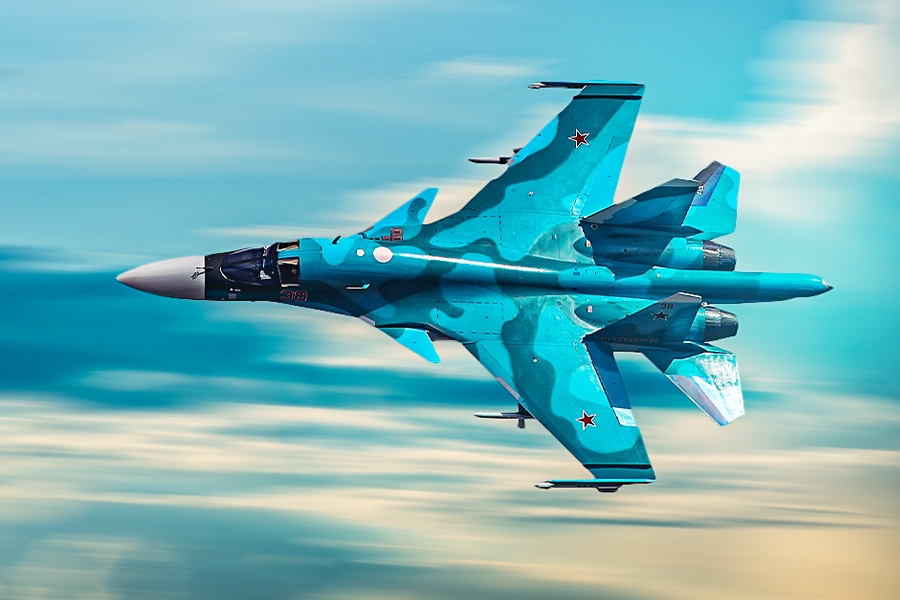
Related
A Look At The Bombers Used By The Russian Air Force
Still using the Tupolev Tu-95 turboprop as its long-range strategic bomber.
2
Blohm & Voss BV 222 Wiking and Blohm & Voss BV 238
13 and 1 (with 2 incomplete prototypes) built, respectively
Okay, so we’re cheating a bit here, as these are technically two different aircraft, which in turn would actually make this article a Top 6 List instead of a Top 5 List. Still, since only one of the latter planes was built (a 1:13 ratio compared to the first one), we feel comfortable lumping them together.
The V 222 was the largest flying boat to attain operational status during the Second World War. When it first flew in 1944, the BV 238 was the heaviest aircraft ever built and was the largest aircraft produced by any of the Axis powers during the war.
|
BV 222 |
BV 238 |
|
|
Crew: |
11-14 |
12 |
|
Fuselage Length: |
37 m (121 ft 5 in) |
142 ft 3 in (43.35 m) |
|
Wingspan: |
46 m (150 ft 11 in) |
197 ft 5 in (60.17 m) |
|
Height: |
10.9 m (35 ft 9 in) |
42 ft (12.8 m) |
|
Empty Weight: |
30,650 kg (67,572 lb) |
120,769 lb (54,780 kg) |
|
Max Takeoff Weight: |
49,000 kg (108,027 lb) |
220,462 lb (100,000 kg) |
|
Powerplant: |
6 × Junkers Jumo 207C six-cylinder liquid-cooled opposed piston 2-stroke diesel engines, 745 kW (1,000 hp) each for take-off |
6 × Daimler-Benz DB 603G inverted V-12 liquid-cooled piston engines, 1,417 kW (1,900 hp) each for take-off |
They were built by the Hamburg-based Hamburger Flugzeugbau (HFB), an aircraft manufacturing offshoot of the Blohm & Voss shipbuilding company. I suppose it at least partially explains why the aircraft subsidiary saw fit to build flying boats.
HFB is now defunct, but Blohm & Voss (or “Blohm+Voss” as they prefer to display their name officially) is still alive and well.
The BV 222 made its maiden flight on September 7, 1940, and was officially introduced into operational service in 1941. As noted by the following Dark Skies video, “During its time in combat with the Luftwaffe it was the largest aircraft to down an enemy plane; however it also was the largest aircraft to be gunned down during the war.” The former happened on October 22, 1943, when BV 222 V4 shot down US Navy PB4Y-1 Liberator, ofttimes mistakenly reported as an RAF Avro Lancaster. The latter occurred at least thrice, with the first such occasion taking place on August 21, 1942, when a Bristol Beaufighter shot down a BV 222 V6.
At the war’s end, several Wikings were captured by US and British forces, but none were preserved for historical posterity. The wreck of Wiking V2 was discovered in October 2023 on the seabed of Norway’s Trondheim Fjord (Trondheimsfjorden) at a depth of 1,043 ft (318 m). It was perfectly preserved due to the low oxygen levels at that depth. Initial plans were to raise and restore the sunken warbird, but those plans were later scrapped. According to historian Knut Sivertsen, the plane is too large for a salvage effort to be practical, plus Mother Nature – in the form of coral growth – is now creeping its way onto the plane.
As for the BV 238, it began development in 1941 and made its maiden flight in April 1944. On May 4, 1945 (four days prior to V-E Day), while moored on Lake Schaal, the plane was strafed and partially sunk by two 20mm cannon-wielding RAF Hawker Tempest fighters. From there, as noted by the narrator of the attached Aviation Deep Dive video:
“Sinking below the lake’s surface, due to the extensive damage to the fuselage, the aircraft sat on the lake bottom for the following two years. In 1947, the 238 was eventually savaged, but tragically, immediately sent to be scrapped. A truly sad end to the aircraft, considering that if it had survived only four more days it might have been saved and put in a museum. As it is, the entirety of the sole produced 238 was completely scrapped, as well as the half-finished hull of the second and third prototype.”
1
Latécoère 631
11 produced (including the prototype)
Sacré bleu! This is the lone plane on our list that is not Nazi German in origin, though it still has a bit of nexus with the so-called “Thousand-Year Reich,” as it was built under Nazi-occupied, puppet-governed Vichy France.
The Latécoère 631 was a civil transatlantic flying boat built by Groupe Latécoère (founded in 1917 and based in Toulouse, France), the largest ever built up to its time. The plane was actually designed in 1936 (four years before the Nazis seized power) and ordered in 1938. Still, the outbreak of the war halted production, and it didn’t resume until after the signing of the Armistice of 22 June 1940 (AKA the Second Armistice at Compiègne). The plane had been conceived by the Direction Générale de l’Aviation Civile (DGAC; “Directorate General for Civil Aviation”) for a 40-passenger airliner with a range of 2500 miles (4,000 kilometers), powered by six Gnome et Rhône P.18 engines of 1,650 horsepower (1,230 kW) each. It finally made its maiden flight on November 4, 1942.
Sometime after the maiden flight, the prototype was confiscated by the Germans, who passed it onto the Luftwaffe, who in turn took the plane to Lake Constance, whereupon it was destroyed in an air raid by two RAF de Havilland Mosquito fighter-bombers on April 17, 1944.
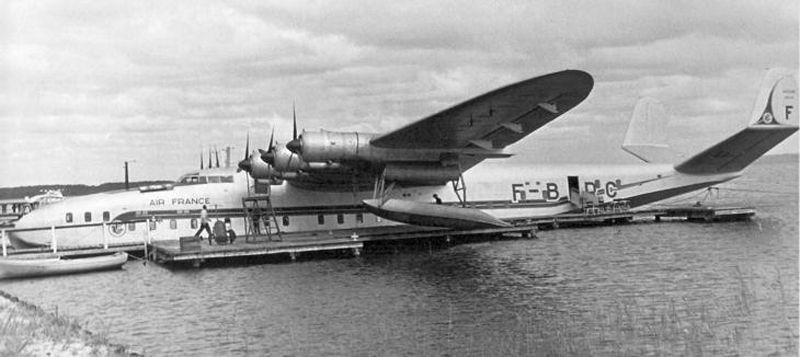
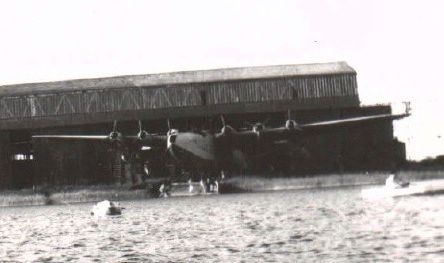
The second plane in the series took place after the liberation of France, on March 7, 1945. This specimen was powered by six Wright Cyclone engines of 1,600 horsepower (1,200 kW) each. The plane survived in limited numbers until September 10, 1955, a solid ten years after the end of the war. However, the Latécoère 631 ultimately failed because it was unreliable and uneconomic to operate.

